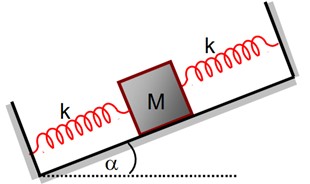Physics Oscillations
Get insights from 123 questions on Physics Oscillations, answered by students, alumni, and experts. You may also ask and answer any question you like about Physics Oscillations
Follow Ask QuestionQuestions
Discussions
Active Users
Followers
New answer posted
3 months agoContributor-Level 10
Since both spring applied force in same direction.
Equivalent spring constant = 4k
New answer posted
3 months agoContributor-Level 10
Using general equation of SHM :
At t = 0
Since it is moving in – x direction
New answer posted
3 months agoContributor-Level 10
As we know that maximum acceleration will act on the particle when it is at extreme position .
New answer posted
3 months agoAt what displacement is the energy of a simple harmonic oscillation half kinetic and half potential?
Contributor-Level 10
For SHM, kinetic and potential energies are equal when displacement , where A is the amplitude. At this point, total energy is evenly shared between motion and position-dependent restoring forces.
Taking an Exam? Selecting a College?
Get authentic answers from experts, students and alumni that you won't find anywhere else
Sign Up on ShikshaOn Shiksha, get access to
- 65k Colleges
- 1.2k Exams
- 679k Reviews
- 1800k Answers



